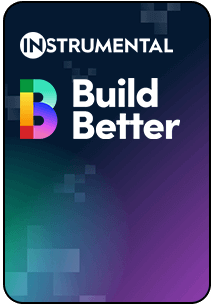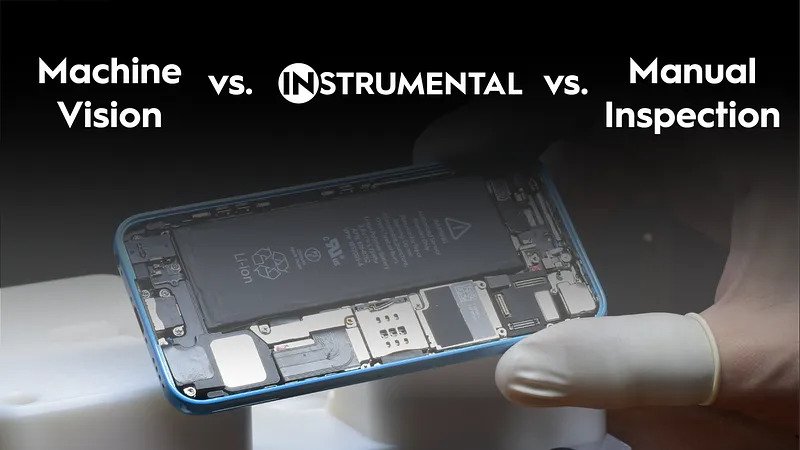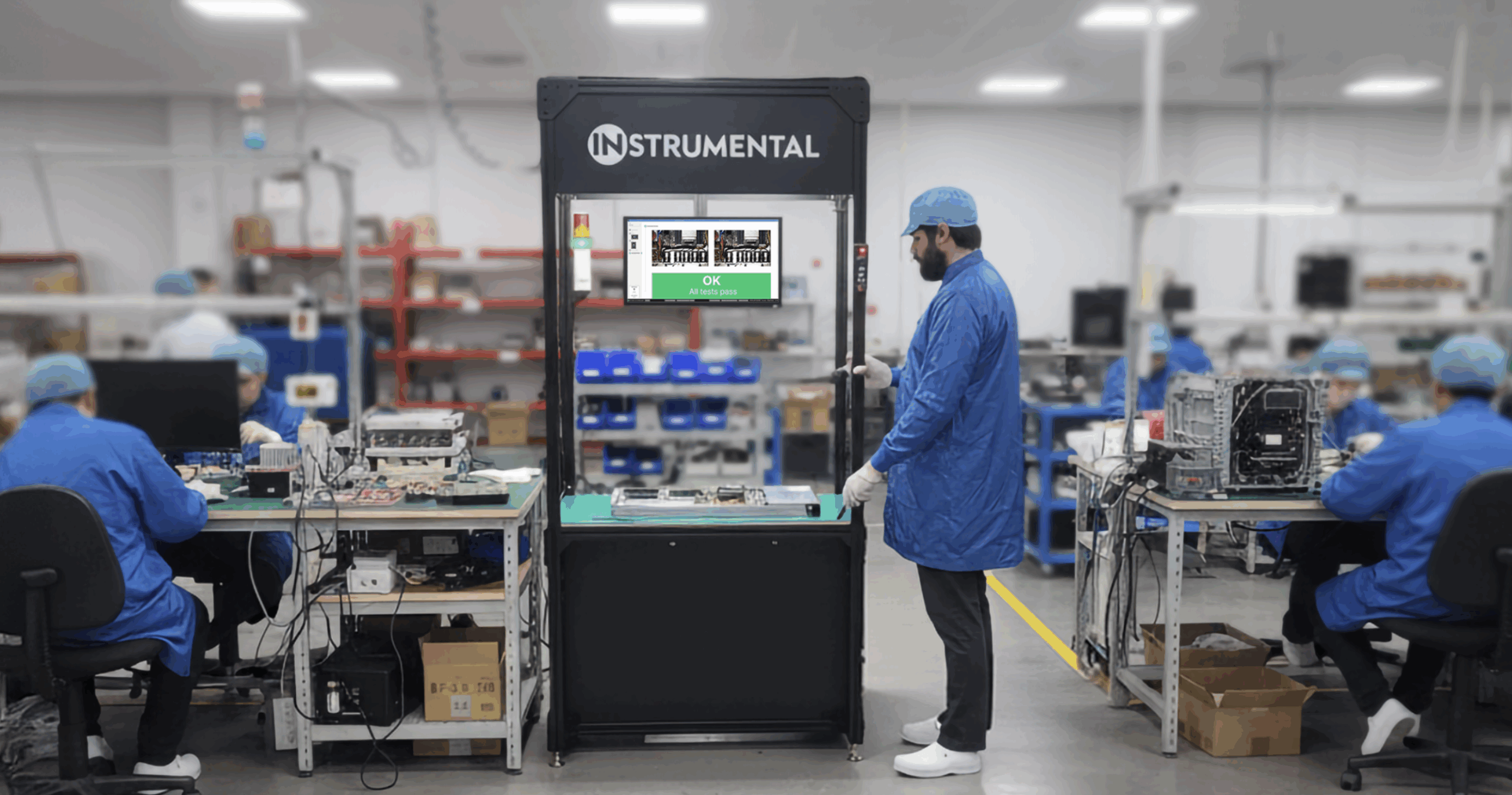How to choose the right quality inspection system for your line
Choosing the right inspection solution can make or break your hardware program. It determines how quickly and accurately you discover problems on the line, whether those problems make it into customer hands, and how well you maintain yields in production.
But there are a lot of options out there, and it can be confusing how they all fit together: machine vision systems, manual inspection points, and new issue discovery tools all come with trade-offs.
Whether you’re responsible for choosing an inspection or issue discovery system, or rely on the data output to do your job, we think it’s important to understand what these different systems do and which are ideal for your needs.
Below we cover the differences between machine vision systems (including automated optical inspection), manual inspection, and how Instrumental brings all of these together to provide a central place to view yield Paretos, quickly complete failure analysis, and maintain ongoing line oversight remotely.
These are only a few categories in the complex ecosystem of tools and processes that ensure quality in electronics manufacturing. Let’s get started.
What to consider when deciding between vision systems and other solutions
Building a quality product starts with understanding weaknesses on two axes:
- Product design for manufacturing – How ready is your design for mass or higher-scale production, and are there any design features that may cause high down-stream failure rates?
- Production process – How good are the manual or automated procedures during assembly at producing defect-free final units?
Understanding where the weaknesses are in your design and your process determines the selection and placement of inspection systems to safeguard against quality issues. But knowing what issues will arise up front isn’t always easy.
Products are getting more complex, which means unanticipated defects and issues during production are more common, not less. Globally distributed teams don’t have the data or data access they need to discover issues and fix them quickly. In some cases, their inspection systems can’t even find the types of defects they’re looking for in the first place.
New product introduction (NPI) can be especially risky because you are typically dealing with novel types of issues. You don’t know what will go wrong, which makes it incredibly difficult to set up the right inspection points up front.
As you determine your manufacturing tech stack for your next build, here are a few core questions to answer before deciding on an inspection system:
- Do you know exactly where, when, and what quality issues happen?
- Do you need to detect issues during development (EVT, DVT, PVT), ramp, or production?
- How will your team access and interact with this solution so they can continually make improvements?
- What is the short term and long term return on investment for this solution?
- Once purchased, when can this solution start providing value?

Machine vision systems
What is machine vision?
Machine vision systems are a collection of technologies such as sensors, microscopes, and cameras that conduct image based inspections and measurements. Vision systems fall into three categories:
- 1D Systems which simply conduct a line scan inspection.
- 2D Systems, the most common category, rely on a single image for inspection. A well known example includes automated optical inspection (AOI) which is designed specifically for PCBAs.
- 3D Systems, the newest category, are based on time of flight, stereoscopic, depth mapping, or other techniques for inspection.
Vision systems are designed for high volume and low variability environments due to their custom implementation requirements.
When should I use machine vision?
Placement of machine vision systems on manufacturing lines varies based on the specific defect the system is inspecting. Machine vision is only used during production when your design is locked due to the highly custom set up of cameras, lighting, and alignment materials. Reconfiguring machine vision systems is complicated and expensive which is why it is not used as an active problem-solving or process improvement tool.
How is machine vision implemented?
Implementing machine vision requires customization from a systems integrator. Each camera set up is optimized to catch a particular type of defect. Each defect must be programmed into the system in order to be detected, which involves extensive set up and training.
What are the pros and cons of machine vision?
Pros
- Machine vision detects preprogrammed defects accurately.
- Machine vision is highly customizable, each implementation is typically optimized for one particular defect.
Cons
- Due to the highly customized implementations of machine vision, each setup can only catch a small handful of defects.
- Machine vision only detects known defects that have been programmed into the system, it does not detect unknown or unanticipated defects.
- Vision systems are not suited to catching defects with difficult to classify failure modes such as glue or seal defects.
- Machine vision provides limited to no data record and, if a data record exists, it is typically not accessible by teams. Debugging requires parts to be in hand.
- Due to the lengthy implementation process and highly customized set up, machine vision systems are not flexible to changes. Every change must be programmed into the system.
- Vision systems do not provide value in development because many defects are unknown and often discovered throughout builds, builds have low volumes, and product and process changes happen.
How much does machine vision cost?
Vision systems typically follow a CapEx model and have additional costs for system integrators and upkeep. Typical solutions involve three to four cameras with hardware costs starting at $40K. Custom integration costs should also be factored in as they represent a significant additional cost. Custom system integration work and materials such as cameras, lens, alignment, lighting, and algorithms can easily exceed initial hardware costs.

Manual inspection
What is manual inspection?
Manual inspection is the process of human operators following a standard operating procedure (SOP) to visually inspect units during assembly. Human inspectors often rely on the naked eye or a microscope to review particular areas for quality.
When should I use manual inspection?
Manual inspection can be performed in a wide variety of places during the assembly of electronic products. Unlike AOI and machine vision, manual inspection can be used throughout development and production, though it tends to provide less value in development because SOPs adapt as new defects are discovered and solved.
How is manual inspection implemented?
Implementing manual inspection doesn’t require technical set up, although management and overhead costs exist.
What are the pros and cons of manual inspection?
Pros
- Manual inspection operators do not require a technical background to detect defects.
Cons
- Accuracy of human inspectors varies and is subject to factors such as fatigue, turnover, and inconsistent classification of defects. These inconsistencies lead to quality variations across operator shifts.
- Only known issues outlined in SOPs are inspected, unanticipated defects are typically not discovered by manual inspectors because they do not have a technical background.
- Teams can’t access a data record of the inspection because there typically isn’t a data record created. The typical manual inspection process lacks modern traceability.
How much does manual inspection cost?
Cost varies depending on the region where the factory is located. Overhead and turnover costs should also be considered when calculating total cost. In some regions, manual inspection operators make about $4 per hour.
When calculating the total cost of manual inspection at a particular place in the line, it is important to note that one operator at a QC inspection station may not be sufficient to keep up with the number of units built. For example, one inspection point may need 3 operators running 2 shifts for a 6 day week, this costs >$1K/week while production is running.
Instrumental
What is the Instrumental optimization platform?
Instrumental is a manufacturing optimization platform that captures images of units as they get assembled and processes them with AI in order to detect known and unknown defects in real-time. Engineering and operations teams use Instrumental to increase speed, reduce costs, and improve quality.
When should I use Instrumental?
Instrumental is leveraged in development and production. In development, engineers use Instrumental’s AI to discover and fix issues from anywhere, accelerating failure analysis and decreasing the amount of cycles needed to reach product maturity. In production, operations teams use Instrumental to intercept defects in real-time, remotely monitor yield, and make optimizations to processes that reduce costs associated with scrap, rework, and returns.
Instrumental is typically placed in multiple locations on the line in order to cover key assembly states. Many of these locations are places where AOI and machine vision solutions do not provide a return on investment.
How is Instrumental implemented?
Instrumental can be set up and begin providing value in one day. Instrumental’s drop-in camera stations can be set up by a non-technical person in 30 minutes or less. Once the first 30 units pass through a station, Instrumental’s AI can start detecting defects. Customers typically discover an unknown defect on their product with AI during onsite or virtual training sessions.
Instrumental’s AI works off of the available data set and doesn’t need to be trained on golden units or defective examples. This fast set up and flexibility addresses the constraints of development, such as fast timelines, unknown defects, variability, and low volumes, without sacrificing robustness requirements in mass production environments.
Instrumental can also be integrated with other solutions. If you already have cameras on your line, Instrumental software can be used on those images. Instrumental also integrates with MES.
What are the benefits of Instrumental?
- Discover issues and detect difficult defects – Instrumental detects known AND unknown defects in real-time because Instrumental’s AI works off of the available data set and doesn’t need to be trained or preprogrammed with special golden units or defective examples. Instrumental also detects difficult defects such as glues or seals.
- Fast setup and easy to use AI – Instrumental’s software is easy to use, setting up AI tests takes only minutes and doesn’t require any machine learning experience.
- Access from anywhere – Instrumental prioritizes data access and traceability. Users can access images, monitor factory production, and set up or adjust live AI tests from anywhere.
- ROI in development and production – In development, engineers find and fix more issues faster with Instrumental, delivering a more mature product. In production, operations teams use Instrumental to optimize processes to improve yield and cut costs associated with scrap, rework, and returns.
How much does Instrumental cost?
The cost of Instrumental varies based on two factors: your product’s complexity and whether you are in development or mass production. These factors determine the key states of inspection and level of service needed. The cost structure operates on a service model that covers the length of a program in order to be flexible to schedule shifts.

Evaluating quality inspection options
Quality inspection has evolved. Simply using systems that catch known defects is a recipe for slow product development cycles and inefficient operations at best. At worst, it could lead to negative customer experiences in the field should an unknown defect escape the factory.
In order to enable your team to continually optimize quality, cut costs, and unearth unanticipated defects, teams need modern solutions. As you consider your options for quality inspection, be sure to get answers to the top 5 questions listed above so that you can find the best solution for your team.
If you are interested in learning more about Instrumental, request a demo here.
Related Topics



